Are you looking to enhance your supplier performance reviews? Crafting a well-structured letter can make all the difference in fostering effective communication. In this article, we'll explore a comprehensive template that highlights key performance indicators, sets expectations, and paves the way for constructive feedback. Dive in to discover how to elevate your supplier relationships for mutual success!

Introduction and Purpose
Supplier performance reviews play a crucial role in evaluating the effectiveness and efficiency of vendors within the supply chain process. The introduction of this performance review aims to provide a structured assessment of supplier capabilities, delivery timelines, quality of goods or services, and compliance with contractual obligations. The primary purpose of this review is to identify areas of improvement, enhance collaboration between partners, and ensure alignment with organizational goals. By analyzing key performance indicators (KPIs) such as on-time delivery rates, defect rates, and adherence to service level agreements (SLAs), businesses can make informed decisions regarding supplier relationships, future orders, and necessary adjustments to achieve optimal operational performance.
Performance Metrics Assessment
The evaluation of supplier performance metrics is essential for ensuring ongoing efficiency and quality in the supply chain process. Key indicators include on-time delivery rates, which ideally should exceed 95% to meet operational deadlines, and product quality scores, with a target defect rate of less than 2%. Communication effectiveness, measured by response time to inquiries (generally within 24 hours), is crucial for fostering strong supplier relationships. Cost management is another significant factor, focusing on price competitiveness and any fluctuations in costs that could impact budget forecasts. Regular assessments of these metrics, conducted quarterly, help in identifying areas for improvement or potential risks related to suppliers, thereby enhancing overall procurement strategies. The performance review not only offers insights into individual supplier capabilities but also aids in aligning their objectives with organizational goals.
Feedback and Observations
Supplier performance reviews are essential for assessing the quality and reliability of products and services provided. Metrics such as on-time delivery (usually assessed as a percentage) and product quality (measured by defective rates) play a pivotal role in this evaluation. For instance, a supplier delivering materials to a manufacturing plant in California must maintain a delivery accuracy rate of above 95% and a defect rate below 2% to meet contractual obligations. Additionally, responsiveness to queries and issues influences overall satisfaction. Observations may reveal patterns; for example, a pattern of late deliveries during peak seasons, such as the holiday season, can undermine production schedules. Feedback should be documented comprehensively, ensuring that both strengths and areas for improvement are clearly articulated for effective communication and actionable plans.
Areas for Improvement
Supplier performance reviews often highlight critical areas needing improvement, such as delivery timelines, product quality, and communication efficiency. For instance, a supplier may frequently miss delivery deadlines by an average of two weeks, disrupting production schedules at manufacturing facilities like those in Detroit, Michigan. Additionally, product quality issues such as a defect rate exceeding 5% could lead to increased returns, directly impacting customer satisfaction levels. Furthermore, communication inefficiencies, manifested through delayed response times averaging over 48 hours for inquiries, hinder collaborative efforts and project advancements. Focused strategies addressing these areas can significantly enhance overall performance and foster stronger supplier relationships.
Future Collaboration and Expectations
Supplier performance significantly influences operational efficiency and product quality in the manufacturing sector. Regular evaluations, such as quarterly reviews, help ensure alignment with company standards and expectations. Metrics including on-time delivery rates (typically above 95% desired), product defect rates (preferably below 2%), and customer satisfaction scores (aiming for a minimum of 85%) are crucial. Future collaboration plans may involve joint training programs or innovation workshops to enhance product development. Clear communication channels, including monthly performance updates and feedback mechanisms, will foster transparency and maintain strong partnerships. Establishing mutual goals, such as sustainability initiatives or cost-reduction strategies, is essential for long-term success.

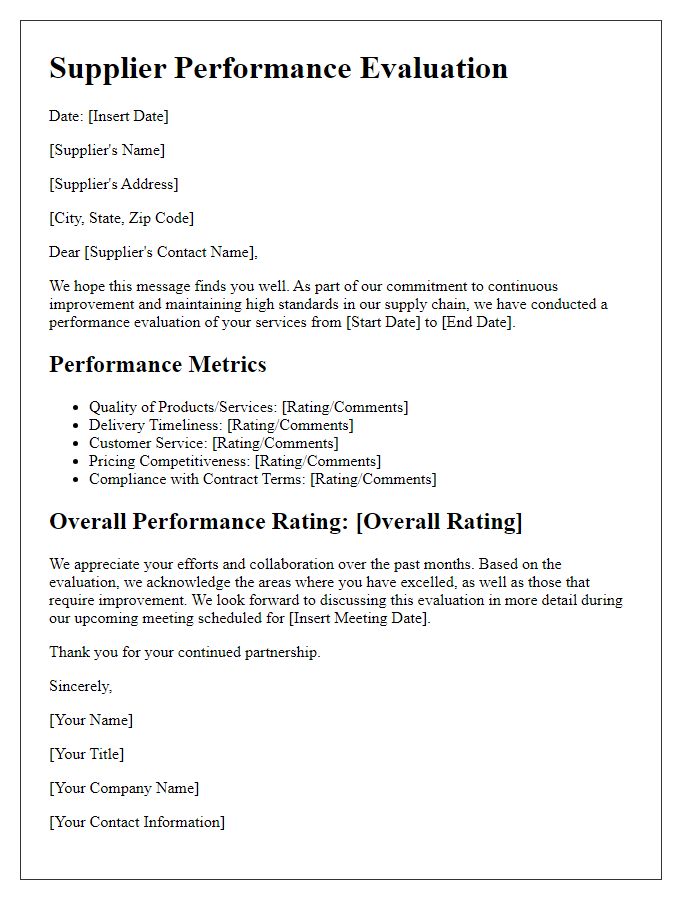
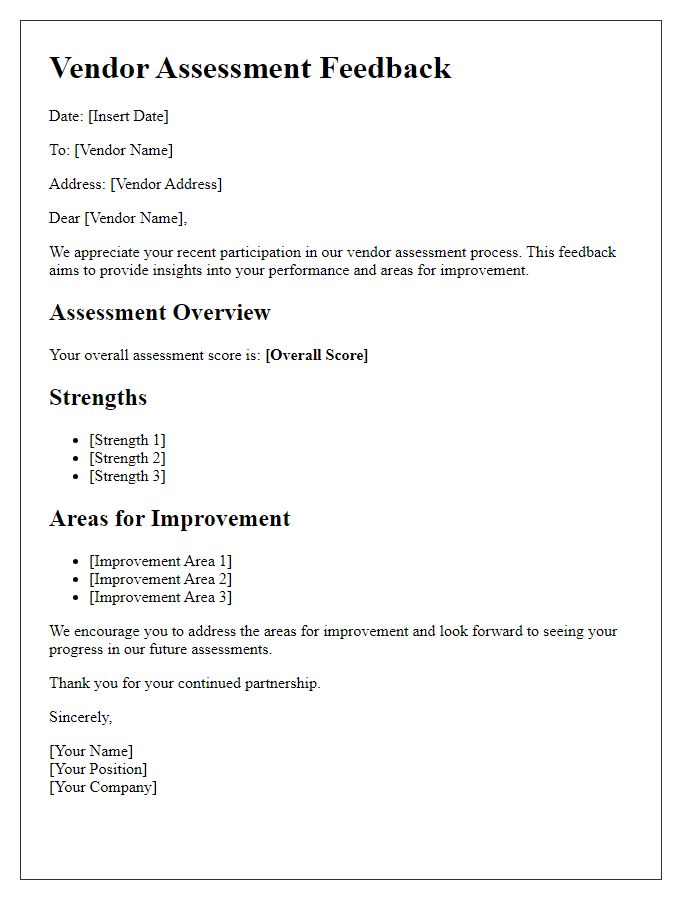
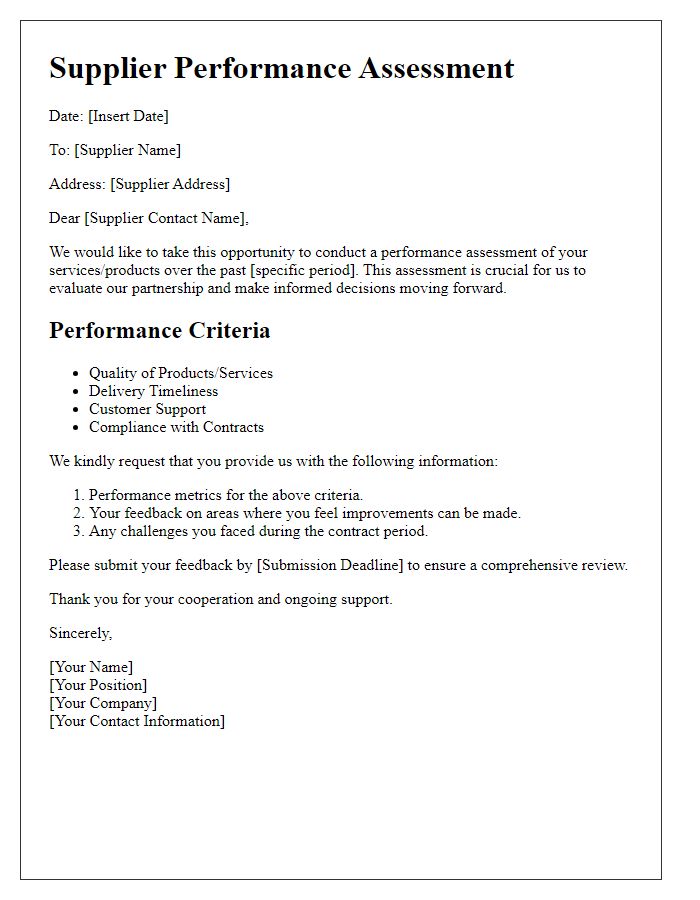

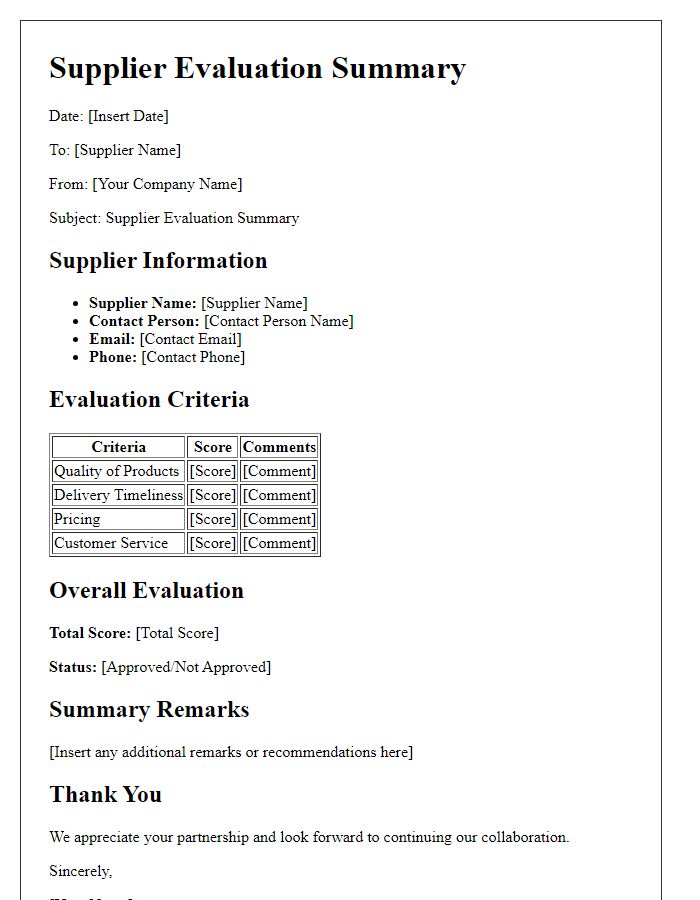
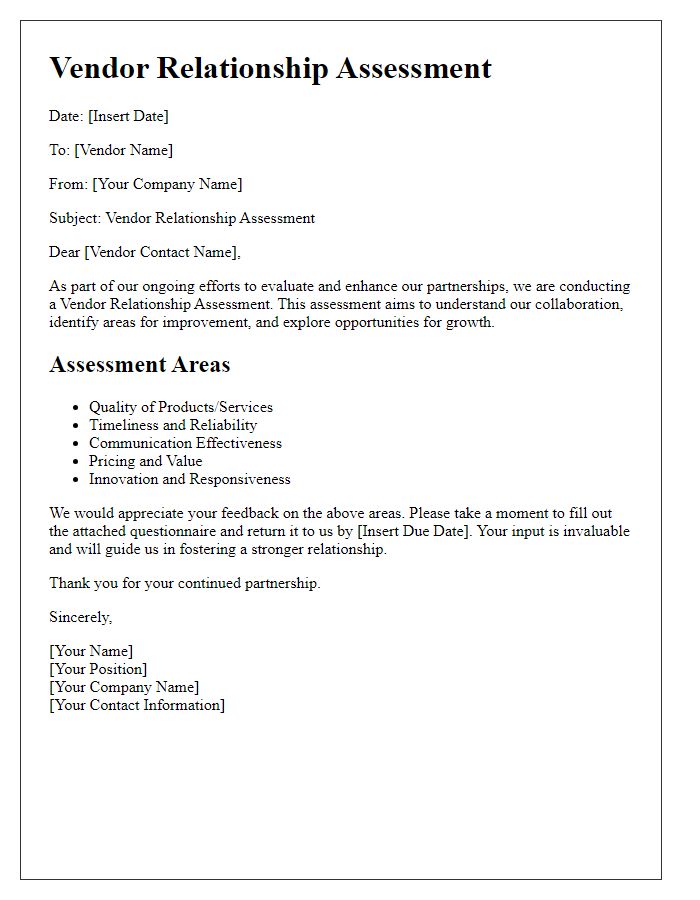
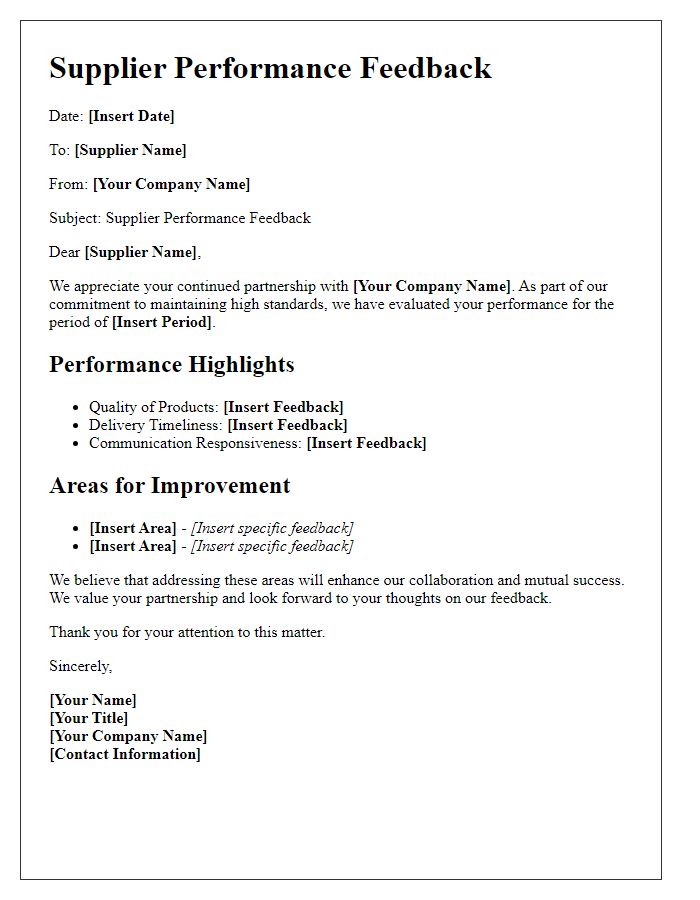
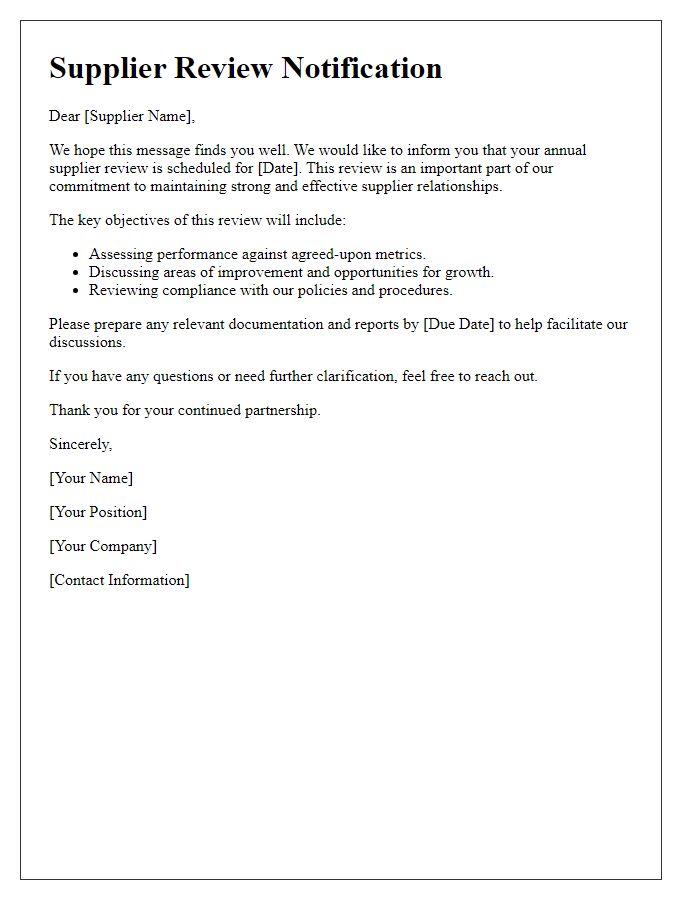
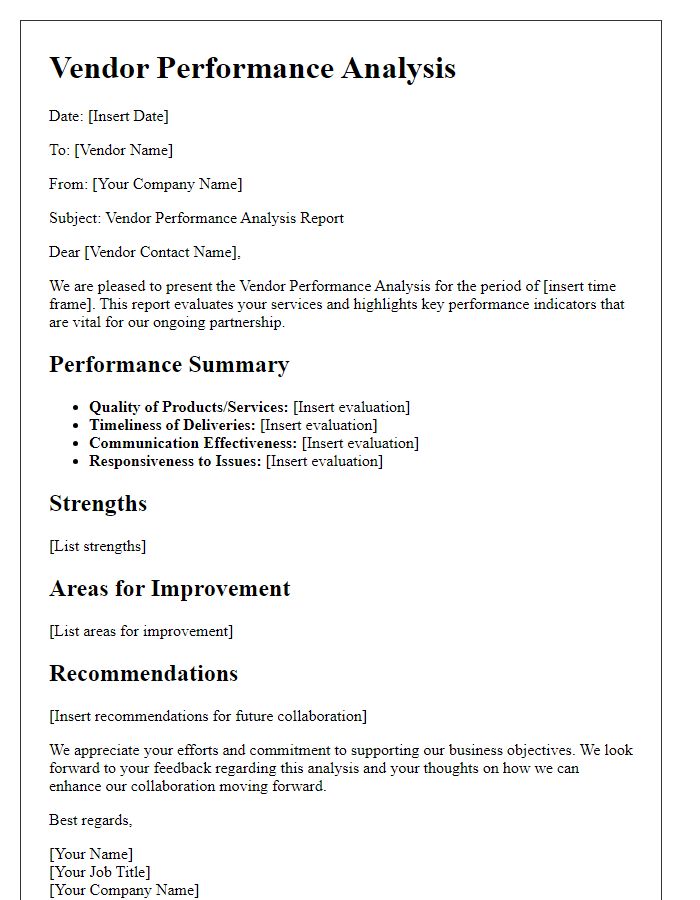
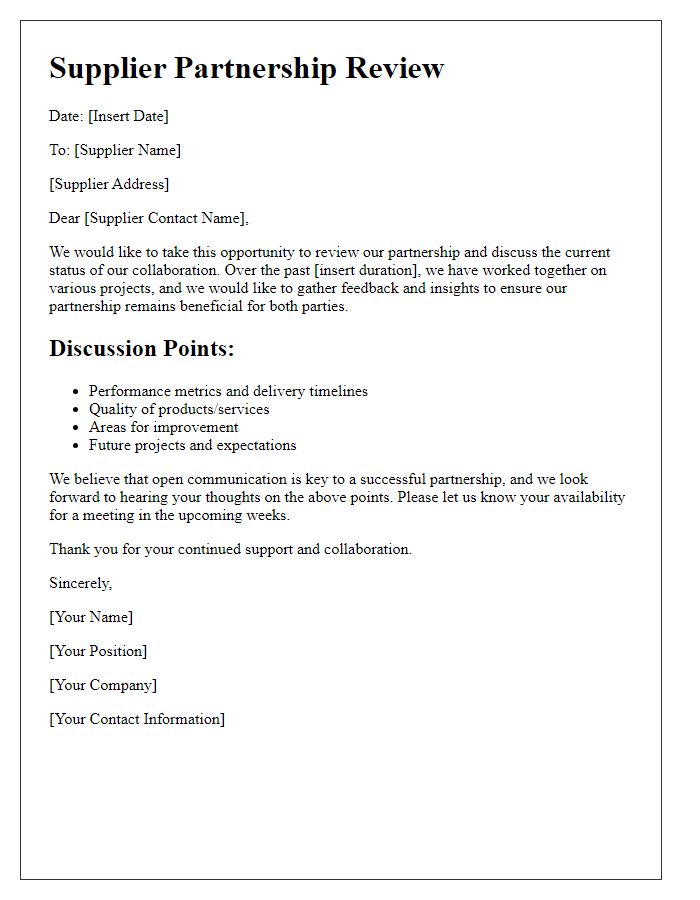


Comments